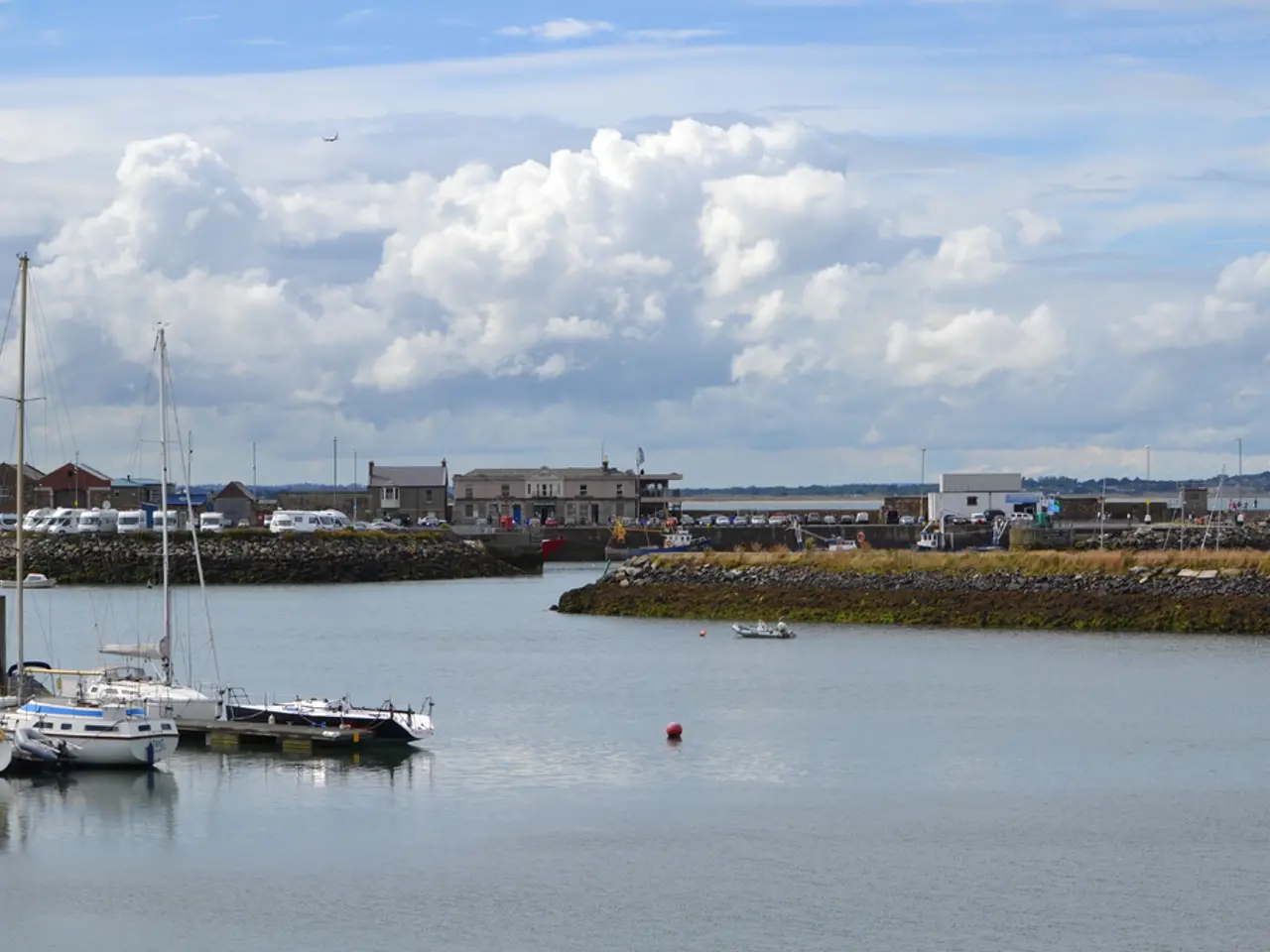Experienced a Storm-Related Injury in the Adriatic Sea
In the heart of the Mediterranean, the Adriatic region recently experienced a severe summer storm that brought widespread destruction to the coastal city of Split, Croatia. The storm, following an extreme heatwave, highlighted the potential impacts of such weather events and the factors driving their occurrence.
The storm's intensity was fuelled by several key factors. Warm sea surface temperatures in the Adriatic Sea, due to marine heatwaves, increased atmospheric moisture, leading to higher dew points and more convective energy, which fuels thunderstorms. High-pressure systems with limited wind stress can create conditions conducive to a heat dome, further amplifying the warming effect, and setting the stage for severe weather events. Wind shear and instability at the interface between different air masses can also lead to the development of rotating thunderstorms (supercells) and rapid storm growth.
The effects of the intense summer storm were far-reaching. Heavy rainfall caused flash flooding, leading to damage to infrastructure, homes, and agriculture, particularly in urban areas like Split. The storm also produced damaging winds and large hail, causing injury to people and damage to buildings and vehicles. The aftermath of the storm included power outages, tree damage, and transportation disruptions, affecting daily life and economic activities.
The Diocletian Palace, a UNESCO World Heritage Site from Roman times, was among the buildings that suffered damage due to the storm. Water stood half a meter deep in the peristyle of the palace, and the storm tore off many rooftops, causing further property damage. In addition, a crane at a nearby shipyard collapsed onto production halls, and numerous trees fell on cars, causing additional damage.
Unfortunately, the storm resulted in injuries to 24 people, who were hospitalized with broken bones and bruises. However, no injuries were reported from a collision involving an Adriatic ferry, a tourist ship, and two other ships in a harbour.
The geography of the Adriatic region, with its coastal areas and nearby mountains, can channel and intensify storms. Climate change is also a growing concern, as it may exacerbate extreme weather events, including more frequent and intense storms in the region.
Preparedness and early warning systems are crucial in mitigating the impacts of severe weather events. The recent storm in Split underscores the importance of such measures, as it highlighted the devastating effects that intense summer storms can have on the environment and human populations.
The storm's intensity was exacerbated by factors associated with environmental-science, such as warm sea surface temperatures due to marine heatwaves, which increased atmospheric moisture, causing higher dew points and more convective energy. Furthermore, the effects of the intense summer storm were far-reaching, highlighting the potential impacts of severe weather events on the science of the environment, including damage to infrastructure, homes, and agriculture.








